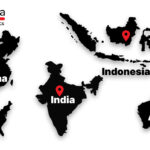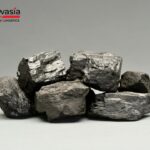What is Coal?
Coal is a combustible black or brownish-black sedimentary rock formed over millions of years from the remains of ancient plants and other organic matter. This process, known as coalification, involves biological and geological changes that convert organic material into peat and coal through heat and pressure. Coal primarily comprises carbon and varying amounts of other elements such as hydrogen, sulfur, oxygen, and nitrogen. It is a fossil fuel that has been used as a source of energy for centuries, playing a crucial role in the Industrial Revolution and continuing to be a significant energy source today.
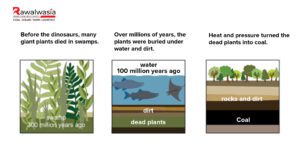
Formation of Coal
The formation of coal begins with the accumulation of plant material in swampy environments where conditions prevent the complete decomposition of organic matter. This material, known as peat, undergoes physical and chemical changes over geological periods as it is buried under layers of sediment. As the depth of burial increases, so do the temperature and pressure, transforming peat into different types of coal. This process can be summarised in several stages:
-
-
- Ancient Swamps: Coal formation begins in ancient swamps, dating back to the Carboniferous period, around 300 million years ago. These swamps had dense vegetation, including trees, ferns, and various plant species.
- Peat Formation: As plant material accumulated in the swamps’ waterlogged conditions, it started to decompose slowly. The oxygen-poor environment prevented complete decay, resulting in the formation of peat.
- Burial and Compaction: Over time, layers of sediment, such as mud and sand, began accumulating on top of the peat. The weight of these sediments exerted pressure on the peat layer, compacting it.
- Coalification Process: The coalification process involves peat’s gradual chemical and physical transformation into coal. This process occurs over millions of years and can be divided into several stages based on the degree of transformation.
-

History and Interesting Facts about Coal
Coal, a combustible black or brownish-black sedimentary rock, has been a crucial energy source for centuries. Its usage dates back to the Bronze Age, where it was used in funeral pyres and to smelt copper. The Romans mined coal in Britain as early as the second century AD. However, it was during the Industrial Revolution in the 18th and 19th centuries that coal’s potential was realised. This era saw coal become the dominant fuel source, powering steam engines, factories, and eventually electricity generation, transforming economies and societies.
Most Coal Mines in the World
Coal mining is a significant industry, with numerous mines scattered across the globe. China boasts the highest number of coal mines, reflecting its position as the world’s largest coal producer. Other countries with extensive coal mining activities include the United States, Russia, Australia, and India. These countries have vast coal reserves and extensive mining operations, ranging from underground to surface (open-pit) mining.
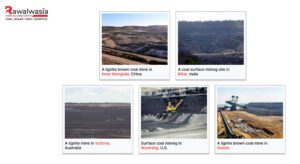
Most Coal Mines in India
India is one of the world’s leading coal producers, with a significant portion of its electricity generation dependent on coal. The country has numerous coal mines in states like Jharkhand, Chhattisgarh, Odisha, West Bengal, and Madhya Pradesh. Jharkhand is home to the largest coal reserves and numerous large-scale coal mines, including the Jharia coalfield, one of India’s oldest and most productive. Coal India Limited (CIL), a state-owned entity, is the country’s largest coal mining company and is responsible for most domestic coal production.

Coal Imports by India
Despite its substantial coal reserves, India is also one of the largest coal importers, primarily due to the high demand from its burgeoning industrial sector and the lower quality of domestic coal. In the fiscal year 2023-2024, India imported approximately 235 million metric tons of coal, mainly from Indonesia, Australia, and South Africa. The imported coal, often of higher quality and calorific value, supplements domestic production to meet the demands of power generation and the steel and cement industries.
Most Coal Usage in Which Country
China holds the title for the highest coal consumption globally. The country relies heavily on coal for electricity generation, industrial processes, and residential heating. In 2023, China accounted for over half of the world’s total coal consumption. China’s extensive use of coal is driven by its massive industrial base, rapid urbanisation, and significant energy needs. Despite efforts to increase the share of renewable energy in its energy mix, coal remains a cornerstone of China’s energy policy due to its abundant domestic reserves and the existing infrastructure supporting coal-based energy production.
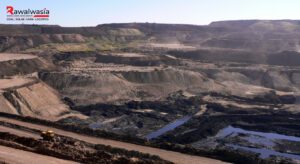
Types of Coal
The different types of coal are classified based on their carbon content, energy content, and the amount of impurities present. The primary types of coal include lignite, sub-bituminous coal, bituminous coal, and anthracite.
- Lignite:
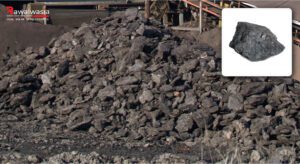
Known as brown coal, lignite has a high moisture and low carbon content, making it the least efficient type of coal for energy production. It is mainly used for electricity generation.
- Sub-bituminous Coal:

This coal has higher carbon content and lower moisture than lignite, making it more efficient for energy production. It is used in power generation and industrial processes.
- Bituminous Coal:
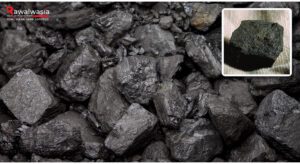
Bituminous coal has higher carbon and lower moisture content and is widely used for electricity generation and steel production.
- Anthracite:
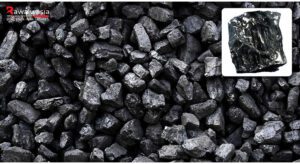
The highest coal rank with the most carbon content and the least impurities. It is known for its high energy content and clean-burning properties.
Conclusion
Coal has been vital in powering industrialisation and providing energy for centuries. However, its various types with distinct properties and impacts necessitate a transition towards cleaner energy sources. Understanding the different types of coal, their properties uses, and impacts is essential in making informed energy production and consumption decisions. As the world moves towards a more sustainable future, reducing reliance on coal and embracing alternative energy sources will be crucial in mitigating climate change and protecting public health. By exploring the benefits and drawbacks of different types of coal, we can better navigate the complex landscape of energy production and environmental stewardship.



